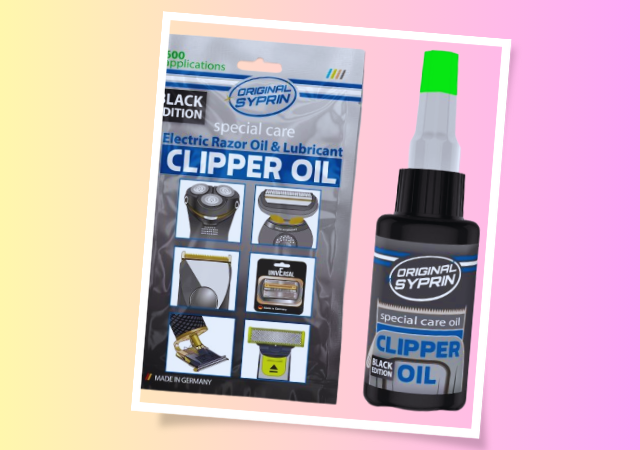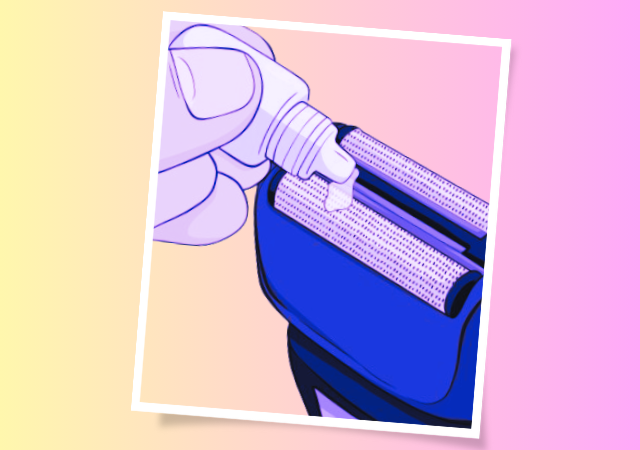How to Extend the Life of Your Electric Razor with Proper Oil Lubrication
Introduction
In the realm of personal grooming, an electric razor is a vital tool for achieving a clean and efficient shave. However, as with any mechanical device, regular maintenance is key to ensuring optimal performance and longevity. One often-overlooked yet crucial aspect of electric razor care is proper oil lubrication. Understanding the intricate mechanisms within the razor and the impact of friction on its components is fundamental to preserving its functionality. This guide aims to shed light on the significance of lubrication, offering insights into the choice of suitable oils and providing a step-by-step approach to effectively lubricating your electric razor.
By following these practices, you not only enhance the razor’s cutting efficiency but also extend its lifespan, ultimately maximizing the value of your grooming investment. Embrace the art of razor maintenance, and unlock the secrets to a prolonged and consistently smooth shaving experience.
Understanding the Electric Razor Mechanism
To appreciate the importance of proper oil lubrication, it’s crucial to grasp the inner workings of an electric razor. These grooming devices consist of intricate components, including blades, a motor, and various moving parts. As the razor glides over the skin, these components generate friction, leading to wear and tear over time. Without adequate lubrication, this friction can accelerate the deterioration of the razor’s performance, resulting in a subpar shaving experience.
Importance of Lubrication
Proper lubrication plays a pivotal role in reducing friction between the razor’s moving parts. By minimizing friction, lubrication helps prevent premature wear and ensures that the razor glides smoothly during operation. This not only enhances the overall performance of the razor but also extends its lifespan. Neglecting lubrication can lead to increased resistance, diminished cutting efficiency, and a higher likelihood of mechanical issues.
Choosing the Right Lubricant

Selecting the appropriate lubricant for your electric razor is paramount. Specialized razor oils are formulated to meet the specific needs of these devices, offering low viscosity and excellent adhesion properties. These oils ensure smooth movement of the blades and other components without attracting excessive debris or causing damage. It’s essential to avoid using household oils or lubricants not designed for razors, as they may contain substances that can harm the razor’s internal mechanisms.
Step-by-Step Guide to Lubricating Your Electric Razor

Properly lubricating your electric razor is a straightforward yet critical process. Here’s a step-by-step guide to help you maintain your razor for optimal performance:
- Prepare the Razor: Before applying any lubricant, ensure your razor is clean. Remove any hair, debris, or shaving cream residue from the blades and other parts. Inspect the razor for any visible damage, such as bent blades or misaligned components.
- Choose the Right Lubricant: Select a high-quality razor oil or a lubricant specifically designed for electric razors. Read the product instructions to determine the appropriate amount to use.
- Apply the Lubricant: Dispense a small amount of the chosen lubricant onto the razor’s blades. Be mindful not to overapply, as excess oil can attract more debris and require additional cleaning.
- Spread the Lubricant: Turn on the razor for a brief moment to allow the lubricant to spread evenly across the blades and other moving parts. This helps ensure that all components are adequately coated for optimal performance.
- Wipe Off Excess Oil: After spreading the lubricant, use a clean cloth or tissue to wipe off any excess oil. This step helps prevent the accumulation of debris and ensures a clean shave.
- Run the Razor Again: For a final check, run the razor briefly without applying pressure to the skin. This allows the lubricant to settle and ensures that the razor moves smoothly.
- Establish a Maintenance Schedule: Determine a regular maintenance schedule based on your usage frequency. For daily shavers, lubricating the razor once a week may suffice, while less frequent users can extend the interval.
- Keep the Razor Clean Between Lubrication Sessions: In addition to regular lubrication, clean your razor between sessions. Use a small brush to remove hair and debris, preventing the buildup of gunk that could affect performance.
- Store the Razor Properly: When not in use, store your electric razor in a dry and clean environment. Avoid leaving it in damp areas, as moisture can accelerate the deterioration of the internal components.
- Address Issues Promptly: If you notice any issues such as blade pulling, reduced cutting efficiency, or unusual noises, address them promptly. Ignoring these signs can lead to more significant problems and may require professional maintenance.
Additional Tips for Electric Razor Maintenance
Aside from proper lubrication, consider the following tips to maximize the lifespan of your electric razor:
- Avoid Excessive Pressure: Refrain from applying excessive pressure while shaving. Let the razor’s blades do the work, and allow them to glide smoothly over the skin.
- Charge the Razor Appropriately: Follow the manufacturer’s guidelines for charging your electric razor. Overcharging or letting the battery run too low frequently can affect the overall lifespan of the device.
- Replace Blades as Needed: Monitor the condition of the blades, and replace them as recommended by the manufacturer. Dull blades not only provide an inefficient shave but can also contribute to increased friction.
- Keep the Razor Protected During Travel: If you often travel with your electric razor, invest in a protective case to shield it from potential damage during transit.
Troubleshooting Common Razor Problems
Even with proper lubrication and maintenance, electric razors may encounter issues over time. Here are some common problems and tips for troubleshooting:
- Blade Pulling: If you experience blade pulling, it may indicate dull or damaged blades. Replace the blades following the manufacturer’s instructions.
- Reduced Cutting Efficiency: This could be a sign of dull blades, inadequate lubrication, or debris buildup. Clean the razor thoroughly, lubricate it, and replace the blades if necessary.
- Unusual Noises: Strange noises during operation may suggest internal issues. If cleaning and lubrication don’t resolve the problem, consider seeking professional assistance.
- Inconsistent Performance: Inconsistent performance may result from uneven lubrication or misaligned components. Follow the lubrication steps carefully, and if the issue persists, consult the manufacturer or a professional technician.
Conclusion (How to Extend the Life of Your Electric Razor with Proper Oil Lubrication)
In conclusion, the key to maximizing the lifespan and performance of your electric razor lies in the often-overlooked practice of proper oil lubrication. Understanding the intricate mechanisms within your razor, the significance of lubrication, and choosing the right lubricant are essential steps. Following a meticulous step-by-step guide, establishing a maintenance schedule, and incorporating additional tips will not only enhance cutting efficiency but also extend the razor’s lifespan. Embrace these practices to unlock the secrets to a consistently smooth shave, maximizing the value of your grooming investment for the long haul.

My name is Rohit Vagh and I’m a content writer specializing in fashion and lifestyle. I have three years of experience in this field and have written various articles. My writing style is creative and engaging, and I strive to create content that resonates with my readers. I have a deep passion for fashion and am constantly researching the latest trends and styles to make sure my readers are up to date. I’m excited to continue my career in blogging, and I’m always looking for new opportunities in the fashion and lifestyle space.





